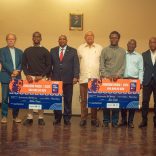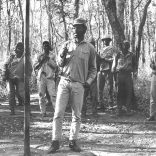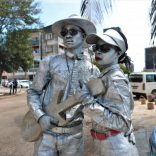Mozambique: Migration explains why stand-up comedians were refused entry into the country - Watch
Brazil, Cape Verde, Mozambique and Angola with new documental heritage on UNESCO’s Memory of the World Register

File photo: UNESCO
Four Portuguese-language countries have new documentary heritage registered in the Memory of the World Programme of the United Nations Educational, Scientific and Cultural Organization (UNESCO), which announced the list of 74 items on Thursday.
“UNESCO today added 74 new documentary heritage collections to its Memory of the World Register, bringing the total number of inscribed collections to 570. The entries – from 72 countries and 4 international organizations – cover topics such as the scientific revolution, women’s contribution to history and major milestones of multilateralism,” reads a UNESCO press release.
Brazil, Cabo Verde, Mozambique and Angola are the Portuguese-language countries with projects recognised in the 2025 edition of the UNESCO programme, which aims to preserve the documentary heritage of humanity.
Brazil has two applications recognised: “The Carlos Chagas Archive” and “Curt Nimuendaju’s Ethno-Historical Map: a cartographic encyclopaedia at the service of the languages, cultures and memories of indigenous peoples”.
According to UNESCO, the “Carlos Chagas Archive” of the Brazilian doctor and scientist Carlos Chagas reflects “the scientific, social and cultural contexts of the discovery of the disease that bears his name”, as well as his fight for science and health.
For UNESCO, the establishment of World Chagas Disease Day by the World Health Organisation in 2019 “demonstrates the importance of this neglected disease on the global health agenda”.
The other recognition for Brazil goes to the cartographic work “The Ethno-Historical Map of Curt Nimuendaju”, which is considered a milestone in the history of anthropology. The document synthesises the knowledge produced about Indigenous peoples in Brazil and neighbouring regions from the 16th century to the mid-20th century.
According to UNESCO, the map presents information on approximately 1,400 indigenous groups, belonging to 41 linguistic families, based on around 900 bibliographical references and stands out for “highlighting the occupation of space, the natural mobility of different groups and the displacements caused by colonisation and the consolidation of Brazilian territory”.
The project “Documents on Slavery in the Archives of the General Secretariat of the Government (Cape Verde, 1842-1869)” was chosen for Cabo Verde.
UNESCO indicates that, in this project, the manuscript books of the Fonds d’Archives du Secrétariat Général du Gouvernement date from 1674 to 1954, with the bulk of the documentation dating from 1803 to 1927.
Considering that these documents are one of the largest collections in Cabo Verde’s National Archives “and the most sought after by researchers”, the organisation adds that this collection plays “a fundamental role in preserving the memory of slavery and encouraging research into its different aspects”.
The collection consists of four boxes, 21 items, 702 sheets of loose documents, a handwritten book of Letters of Freedom, Autos de Juramento and minutes of sessions of the Luso-British Joint Commission.
Finally, a joint application for the slave books and registers between Angola, Mozambique and Cabo Verde won.
“Census of slaves in Angola, Cabo Verde and Mozambique determined by Portuguese decree of 14/12/1854” is a project comprising 79 slave registration books in these countries, created mainly between 1856 and 1875.
UNESCO notes that these registers, issued by decree of the Portuguese Crown, documented all enslaved and freed individuals in its overseas territories, laying the foundations for the abolition of slavery in 1869.
Regarding the importance of this entry from Angola, Cabo Verde and Mozambique, UNESCO says that these records are about “a time when slavery had opponents all over the world” and that these books “provided detailed records, including names, sex, place of birth, age, physical characteristics, occupations and information on slave owners”.
About the Memory of the World Programme
Established in 1992, the Memory of the World Programme aims to promote the preservation of – and universal access to – the documentary heritage of humanity. Often extremely fragile, this heritage is exposed to risks of deterioration and disasters.
In addition to the International Register, UNESCO has supported the creation of four regional registers and National “Memory of the World” Committees in more than 100 countries.
Furthermore, the Organization assists countries in developing safeguarding policies, provides training and funding to memory institutions for the digitization of their collections, and works with educational bodies to integrate these essential elements of our past into school curricula, ensuring their transmission to future generations.
.@UNESCO today added 74 new documentary heritage collections to its #MemoryOfTheWorld Register, bringing the total number of inscribed collections to 570.
The entries – from 72 countries and 4 international organizations – cover topics such as the scientific revolution, women’s… pic.twitter.com/omydzdQg3r
— UNESCO 🏛️ #Education #Sciences #Culture 🇺🇳 (@UNESCO) April 17, 2025












Leave a Reply
Be the First to Comment!
You must be logged in to post a comment.
You must be logged in to post a comment.